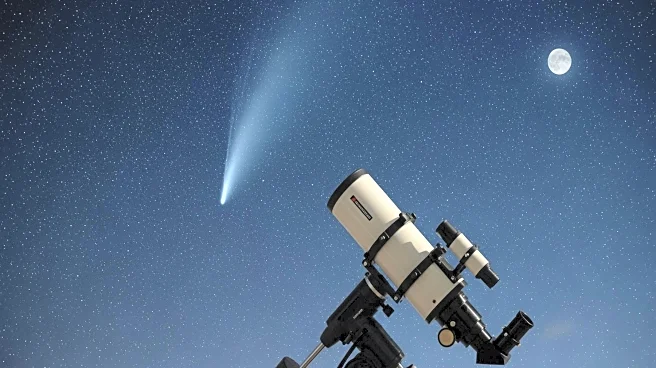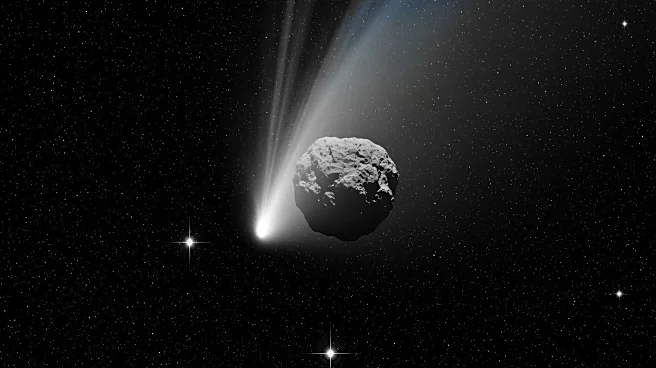What's Happening?
Astronomers have observed a unique transformation in the comet C/2025 K1 (ATLAS), which developed a golden glow after surviving a close approach to the sun. The comet, discovered by the Asteroid Terrestrial-impact
Last Alert System (ATLAS), reached its closest point to the sun on October 8, coming within 31 million miles. Despite expectations that the comet would disintegrate due to gravitational forces, it survived and displayed a rare golden color. This coloration is attributed to a lack of carbon-bearing molecules, which typically cause comets to appear white or green. The comet's golden hue has been captured by astrophotographers in California and Arizona.
Why It's Important?
The survival and transformation of C/2025 K1 (ATLAS) provide valuable insights into the composition and behavior of comets. The rare golden color suggests unique chemical properties, potentially offering new information about the materials present in the comet's coma. This discovery contributes to the understanding of cometary science and the effects of solar proximity on celestial bodies. It also highlights the capabilities of the ATLAS system in identifying and tracking such phenomena, which can enhance future comet studies and predictions.
What's Next?
C/2025 K1 is expected to remain visible until early December, reaching its closest point to Earth on November 25. Astronomers and enthusiasts can observe the comet using telescopes or binoculars, particularly in the eastern sky before sunrise. Continued observation may reveal further changes in the comet's appearance and provide additional data on its composition and trajectory. The scientific community will likely continue to study the comet's unique characteristics to better understand the processes affecting cometary bodies during solar encounters.















